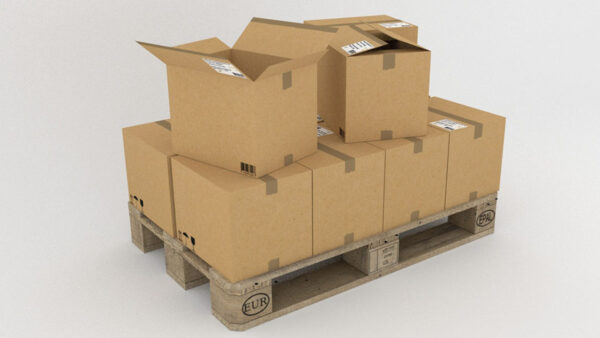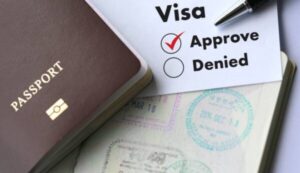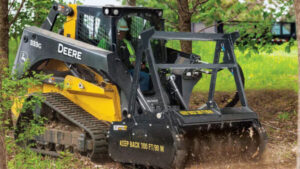Boxed Packaged Goods: Types of Packaging and Their Uses
6 min read
Boxed Packaged Goods
Packaging plays a crucial role in the world of consumer goods, ensuring the safe transportation, storage, and presentation of products. Among the various packaging options available, Boxed Packaged Goods stands out as a versatile and widely used solution. From protecting delicate items during transit to enhancing the aesthetic appeal on store shelves, Boxed Packaged Goods serve multiple purposes. In this article,
we will explore nine types of boxed packaging and their diverse uses in the consumer goods industry.
1. Cardboard Boxes:
Cardboard boxes are perhaps the most common and widely recognized form of boxed packaging. They come in various sizes and thicknesses, making them ideal for packaging items ranging from electronics to food products. Cardboard boxes provide excellent protection during shipping and are easily customizable with printing for branding and labeling purposes.
2. Corrugated Boxes:
Corrugated boxes are a specialized type of cardboard box, featuring a fluted layer between two flat layers. This design enhances the box’s strength and durability, making it suitable for heavy or fragile items. Corrugated boxes are commonly used for shipping, storage, and moving purposes.
3. Retail Ready Packaging (RRP):
Retail Ready Packaging, also known as Shelf Ready Packaging (SRP), is specifically designed to streamline the stocking process at retail stores. These boxes are easy to open, display, and replenish on store shelves, minimizing the time and effort required for restocking products.
4. Gift Boxes:
Gift boxes are aesthetically appealing boxed packaging, designed to enhance the presentation of gifts for various occasions. They come in a wide range of designs, colors, and sizes, adding an element of surprise and delight for the recipients.
5. Folding Cartons:
Folding cartons are lightweight and versatile boxes made from paperboard. They are commonly used for packaging items like cosmetics, pharmaceuticals, and small consumer goods. Folding cartons are easily foldable and can be sealed with adhesive or tabs.
6. Rigid Boxes:
Rigid boxes, also known as set-up boxes, are sturdy and durable packaging options often used for high-end or luxury products. They offer a premium look and feel and are commonly found in the packaging of luxury chocolates, perfumes, and electronics.
7. Pizza Boxes:
Pizza boxes are specialized boxed packaging designed to transport and deliver pizzas while keeping them hot and fresh. These boxes typically feature vents to allow steam to escape, preventing sogginess during transit.
8. Mailer Boxes:
Mailer boxes are lightweight and compact boxes used for shipping small products like clothing, accessories, or books. They often have a self-locking design, eliminating the need for additional sealing materials.
9. Takeout Boxes:
Takeout boxes, also known as Chinese food boxes, are popular for their convenience in carrying and serving takeaway meals. They are often made from paperboard and feature a wire handle for easy carrying.
Conclusion:
Boxed packaged goods offer a wide range of solutions for protecting, presenting, and transporting consumer products. From everyday cardboard boxes used in shipping to elegant rigid boxes used for luxury items, the versatility of boxed packaging is evident in various industries. Retailers and manufacturers continue to innovate and adapt boxed packaging to meet evolving consumer demands for eco-friendly, convenient, and visually appealing packaging solutions. As the consumer goods industry continues to grow, boxed packaging will undoubtedly remain an essential element in the journey from production to the hands of consumers.
Frequently Asked Questions (FAQ) about Boxed Packaged Goods
1. What are boxed packaged goods?
Boxed packaged goods refer to products that are enclosed or wrapped in boxes made from various materials like cardboard, corrugated paper, or rigid board for protection, storage, transportation, and presentation purposes.
2. What types of products are commonly packaged in boxes?
Boxed packaged goods encompass a wide range of products, including electronics, food items, clothing, cosmetics, pharmaceuticals, luxury items, gifts, and more.
3. What are the advantages of boxed packaging?
Boxed packaging offers several advantages, such as providing protection during transit, easy handling, storage efficiency, branding opportunities, and enhancing the visual appeal of products on store shelves.
4. How do I choose the right boxed packaging for my product?
Choosing the right boxed packaging depends on factors like the product’s size, weight, fragility, and target market. Consider the level of protection needed, the packaging’s appearance, and environmental considerations while making a selection.
5. Can boxed packaging be customized for branding purposes?
Yes, boxed packaging can be customized with printing, labeling, and branding elements to promote brand identity and create a distinctive product presentation.
6. What is Retail Ready Packaging (RRP) or Shelf Ready Packaging (SRP)?
Retail Ready Packaging, also known as Shelf Ready Packaging, is designed to simplify the stocking process at retail stores. It enables easy opening, displaying, and replenishing of products on store shelves, streamlining the retail supply chain.
7. Are boxed packaged goods environmentally friendly?
The environmental friendliness of boxed packaged goods depends on the materials used. Opting for sustainable and recyclable materials like recycled cardboard or biodegradable options can contribute to eco-friendliness.
8. How can I ensure the safety of delicate or fragile items during shipping in boxed packaging?
For delicate or fragile items, consider using corrugated boxes or adding protective cushioning materials like bubble wrap or foam to prevent damage during transit.
9. Can boxed packaging be reused or recycled?
Yes, many boxed packaging materials, such as cardboard and corrugated boxes, can be recycled. Consumers are encouraged to recycle packaging materials properly to reduce environmental impact.
10. What are the popular uses of gift boxes and rigid boxes?
Gift boxes are commonly used for presenting gifts on special occasions, while rigid boxes are favored for luxury products like chocolates, perfumes, and electronics due to their premium appearance.
11. Are there specialized boxed packaging options for food delivery and takeout?
Yes, takeout boxes and pizza boxes are specialized boxed packaging designed to keep food items hot and fresh during delivery or takeaway, ensuring a convenient dining experience.
12. Can I find eco-friendly boxed packaging options?
Yes, there are eco-friendly boxed packaging options available, such as boxes made from recycled materials, biodegradable materials, or FSC-certified sustainable sources.
13. How can I source boxed packaging for my business?
To source boxed packaging for your business, you can connect with packaging suppliers, manufacturers, or packaging companies that offer customizable solutions based on your specific product requirements.
14. What are the latest trends in boxed packaging?
The packaging industry is constantly evolving with trends like minimalist designs, sustainable materials, interactive packaging, and innovative opening mechanisms gaining popularity in boxed packaged goods.
15. Can I use boxed packaging for e-commerce shipments?
Yes, boxed packaging is commonly used for e-commerce shipments, providing a secure and presentable solution for shipping products to customers’ doorsteps.
Remember to consider the specific needs of your product and target audience when choosing boxed packaged goods. Utilizing the right packaging can not only protect your products but also create a positive brand impression and enhance customer satisfaction.






